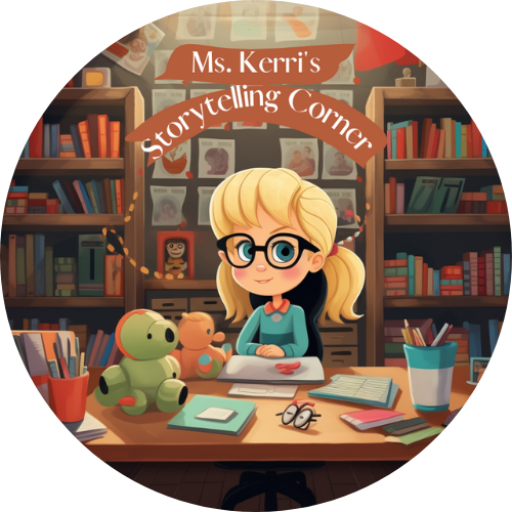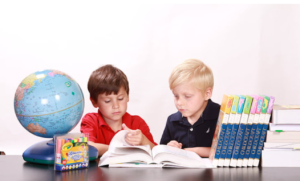Rooted in Tradition: A Delightful Selection of Indigenous Children’s Books
I. Introduction
A warm and hearty welcome, dear readers, as you step into the embrace of this blog post, a welcoming hearth where stories come to life and the journey begins. We set our compass to a friendly and inviting tone, a tone that beckons you to explore the fascinating world of indigenous literature for children. Within these words, we uncover the profound significance of diverse literary treasures for the young hearts and minds that thirst for knowledge and cultural enrichment. This digital portal opens its doors with a purpose, a purpose that shines brightly — to be your guide, to lead you through the labyrinthine paths of the best indigenous books, each page a doorway to wonder, wisdom, and the kaleidoscope of human experience.
II. The Rich Tapestry of Indigenous Culture
In this symphony of cultural diversity, picture, if you will, a mesmerizing canvas where indigenous cultures flourish, each a vibrant stroke on the masterpiece of our human tapestry. The importance of preserving and celebrating these cultures, deeply rooted in the very essence of our collective heritage, cannot be overstated. It is through the pages of indigenous books that these vibrant cultures breathe and speak, the pen serving as both quill and guardian of tradition. These narratives are not mere words; they are vessels of history, of beliefs, of life. The indigenous books themselves, the bridge that transcends time and place, connect generations, fostering understanding and empathy, preserving the kaleidoscope of indigenous culture and nurturing the educational journey of young minds.
III. Navigating the World of Indigenous Children’s Books
As we step onto the threshold of indigenous children’s literature, there lies an expansive terrain, an uncharted realm of possibility. We recognize the potential for an overwhelming array of indigenous books, a labyrinth that might appear daunting. Yet, dear readers, let this notion not deter but excite you. We are voyagers on a profound journey, an odyssey into understanding and enlightenment, wherein lies the treasures of culture and identity. The fruits of this exploration extend beyond a mere literary discovery; they bestow upon young readers the riches of knowledge, empathy, and appreciation. In this tapestry of narratives, we find the means to inspire young hearts and minds, to embark on an enriching journey that carries the promise of growth, understanding, and the boundless delight of discovery.
IV. The Power of Storytelling
In the heart of indigenous communities, a timeless alchemy unfolds – the art of storytelling, where tales aren’t mere words; they are bridges between past and present, between generations and worlds. Let us embark on a journey to explore the unique storytelling traditions that dance like spirits within these cultures. These traditions are woven with threads of myth, legend, and history, oral narratives passed down through ages, richly embroidered with the essence of people, land, and spirit. In their narratives, we discover not only the profound tales of creation but the wisdom of existence, the rhythm of life, and the resonance of culture.
Storytelling, in the indigenous realm, is not a mere indulgence of the imagination; it is a powerful tool, a cultural compass that guides the young and the old. Through the oral passage of these stories, traditions breathe, and histories endure. This is the soul of cultural preservation, and storytelling, a language where the past embraces the future.
As stories journey from the lips of elders to the pages of books, we witness a transition of paramount importance. The oral traditions that once reverberated through the air find a new home within the written word. The tales transform, they evolve, but their spirit remains, a legacy lovingly transitioned from oral to written narratives. This seamless transformation is a bridge between worlds, an essential link that ensures the legacy of these cultures endures, providing insight into the magnificence of human diversity.
V. What Makes a Great Indigenous Children’s Book?
Within the treasure troves of indigenous children’s literature, one finds gems of exceptional brilliance, radiant with cultural authenticity, engaging narratives, and relatable characters. In the heart of these narratives, cultural authenticity reigns supreme. Each page is a testament to the legacy of indigenous authors, a celebration of their lived experiences. The books serve not as passive vessels but living embodiments of culture, each page a vessel carrying the essence of tradition, history, and community.
These books captivate young readers through narratives that pulse with life. Engaging storytelling, a hallmark of indigenous children’s books, is the art of weaving tales that captivate, educate, and resonate with the young. The tales bring to life the experiences, aspirations, and challenges of indigenous communities, inviting young minds to traverse the pages and join the adventure.
In the world of indigenous children’s books, the characters are more than ink and paper; they are conduits, relatable souls that guide young readers through the narrative. These characters stand not as mere figures but as mirrors to young hearts, reflecting experiences, emotions, and dreams. In these books, young readers discover not only stories but a piece of themselves, their connection to culture and to the world at large.
The impact of these books on young readers is immeasurable. They are not just tales, but keys to the world, unlocking doors to understanding, empathy, and the marvel of diversity. These narratives nurture the seeds of curiosity and knowledge, fostering a generation that embraces culture and values the kaleidoscope of our shared human experience.
VI. The Top Picks: Indigenous Children’s Books
Within the vast tapestry of indigenous children’s literature, there exists a constellation of shining stars, books that stand as beacons of cultural richness, wisdom, and wonder. We present to you, dear readers, a carefully curated list of the finest indigenous children’s books, each one a masterpiece that encapsulates the essence of culture, history, and the human spirit.
Curated Literary Treasures
“Wilma Mankiller” by Maria Isabel Sanchez Vegara
Discover the life of Wilma Mankiller, the first woman elected as Principal Chief of the Cherokee Nation, in this inspiring addition to the Little People, BIG DREAMS series.
“Fry Bread” by Kevin Noble Maillard
Explore the beauty of family, culture, and food in this award-winning picture book that provides insights into the Native American experience.
“Jingle Dancer” by Cynthia L. Smith
Follow a young child of Muscogee and Ojibway descent as she aspires to dance the traditional Jingle Dance, highlighting the enduring importance of family, culture, and generational traditions.
“We Are Water Protectors” by Carole Lindstrom
Join a young Native child in the fight to protect the Earth’s water from harm, emphasizing environmental stewardship and the pursuit of a sustainable future.
“The Girl Who Loved Wild Horses” by Paul Goble
With bold, vibrant illustrations and recipient of the Caldecott Medal, this captivating book immerses readers in the life of a young Native girl who shares an extraordinary bond with wild horses.
Distinctive Qualities and Cultural Relevance
Each book on this list is a jewel in its own right, bearing distinctive qualities and themes that resonate with the unique experiences of indigenous communities. “Wilma Mankiller” celebrates a trailblazing leader, emphasizing the importance of leadership, while “Fry Bread” beautifully intertwines family, culture, and cuisine, showcasing the rich tapestry of Native American life. “Jingle Dancer” delves into the importance of generational traditions and identity, while “We Are Water Protectors” powerfully addresses the vital issue of environmental stewardship. “The Girl Who Loved Wild Horses” is a visual masterpiece, inviting readers into the heart of a unique bond between a young Native girl and nature.
Engaging and Educative Narratives
These books are not mere words on paper; they are portals to culture, identity, and understanding. Through these narratives, young readers can embark on transformative journeys, exploring the beauty of diversity and the power of storytelling. These books ignite the spark of curiosity, nurturing young minds to appreciate, empathize, and celebrate the vibrant cultures of indigenous communities. Each tale carries the potential to leave an indelible mark on young readers, inspiring them to appreciate the world’s cultural kaleidoscope and fostering a sense of connection with our shared human heritage.
VII. Ages and Stages: Matching Books to Children

Importance of Age-Appropriate Reading Material
Within the realm of children’s literature, age-appropriate reading material is the compass guiding young explorers through the world of words. It’s not merely a matter of vocabulary complexity or reading proficiency; it’s about crafting an experience that resonates with the young reader’s stage of development. Just as a hiker adapts their gear to the terrain they traverse, it’s essential that we, as caregivers and educators, select books that align with a child’s cognitive and emotional readiness. These well-matched books become stepping stones for comprehension, engagement, and growth, allowing the child to embark on a literary adventure suited to their evolving abilities.
Guidance on Selecting Books for Different Age Groups
The reader’s age determines the lenses through which they view and interpret a story. For our youngest readers, picture books with vibrant illustrations and simple narratives are like colorful maps to the world of language. As they mature, early chapter books introduce more complex plots, while young adult literature delves into intricate themes and emotions. In the context of indigenous children’s books, it’s vital to match the book’s content and message to the reader’s age group, ensuring both comprehension and emotional resonance. By thoughtfully selecting books that suit a child’s stage of development, we pave the way for a lifelong love of reading.
Benefits of Tailoring the Reading Experience
Tailoring the reading experience to a child’s developmental stage brings forth a host of benefits. Not only does it optimize comprehension and engagement, but it also fosters a sense of empowerment and confidence. It allows young readers to explore, learn, and appreciate the nuances of culture and tradition at their own pace. Through the age-appropriate exploration of indigenous children’s books, we not only ensure that young minds grasp the content but also provide them with the keys to unlock deeper layers of understanding as they grow and evolve.
VIII. Let the Learning Begin
Encouraging Joint Exploration
Reading is more than a solitary journey; it’s a shared voyage through the landscapes of imagination. We invite readers to embark on this expedition with their young ones, creating an interactive bond through the pages of indigenous children’s books. By sitting down together, caregivers and children traverse not only the tales but the emotional landscapes they evoke. This shared experience, this togetherness, is the catalyst for deeper connections and learning, fostering bonds that extend beyond the pages and into the hearts.
Discussion Points and Interactive Activities
Beyond the words and pictures, indigenous children’s books offer the potential for rich conversations and interactive explorations. Engage young readers with questions, asking them to reflect on the stories, characters, and themes. Interactive activities, from art projects to cooking experiences, can bring the narratives to life, connecting children to culture, tradition, and history in an immersive and memorable way. These discussions and activities elevate the reading experience, transforming it into a dynamic and educational adventure.

Family Engagement and Dialogue
Indigenous children’s books, when explored together, become catalysts for family engagement and dialogue. These narratives provide a platform for discussing culture, history, and tradition, fostering connections to the wider world. The conversations that arise from these books can bridge generations, uniting young and old in a shared understanding of the cultural tapestry that envelops us. Such familial engagement transforms the act of reading into a bond-building experience, where stories act as vessels that carry the rich heritage of indigenous cultures into the lives of young readers.
IX. Meeting the Authors
Prominent Indigenous Children’s Book Authors
Let us introduce you to three exceptional authors who have woven the tapestry of indigenous culture into the pages of children’s books. One such luminary is Cynthia L. Smith, the gifted author behind “Jingle Dancer.” Cynthia, of Muscogee and Ojibway descent, is a storyteller who masterfully crafts narratives that resonate with the traditions of her people. Her works take young readers on a journey into the heart of indigenous culture, connecting them with the age-old wisdom of her ancestors.
Another noteworthy author in this literary constellation is Carole Lindstrom, the creative force behind “We Are Water Protectors.” Carole’s motivation is deeply rooted in her indigenous heritage and her commitment to addressing pressing environmental issues. Her storytelling is a call to action, an invitation to young readers to become guardians of the Earth and protectors of the water, carrying forward the legacy of her people’s stewardship.
In our literary voyage, we also encounter Maria Isabel Sanchez Vegara, the author of “Wilma Mankiller.” Through her engaging storytelling, Maria brings to life the extraordinary journey of Wilma Mankiller, the first woman elected as Principal Chief of the Cherokee Nation. Her works highlight the remarkable achievements of indigenous leaders, emphasizing the importance of leadership, empowerment, and cultural resilience.
The Inspirations and Motivations
These authors draw inspiration from the depths of their cultural heritage and personal experiences. Cynthia L. Smith’s motivation arises from the desire to share the beauty of the jingle dress dance, a cherished tradition within the Ojibway culture, with young readers. Carole Lindstrom is driven by a passion to address environmental concerns, rooted in the profound connection indigenous peoples have with the Earth. Maria Isabel Sanchez Vegara’s inspiration lies in the remarkable achievements of indigenous leaders like Wilma Mankiller, whose stories serve as a source of empowerment and encouragement for young readers.
The narratives crafted by these authors are not mere tales; they are vessels of culture, tradition, and history. Their stories are woven with the threads of heritage, and their words are a tribute to the resilience and spirit of indigenous communities.
Celebrating and Supporting the Authors
Celebrating and supporting these authors is not just an act of literary appreciation; it is a testament to the importance of preserving and promoting diversity in children’s literature. By reading their works, attending their events, and sharing their stories, you become an integral part of the effort to ensure that the voices of indigenous authors continue to resonate and educate. These authors are not only storytellers; they are cultural ambassadors, and your support is a beacon of understanding and unity in the world of children’s literature.
X. Resources for Further Exploration

Pointing to Additional Resources
Our literary journey does not conclude here; it merely reaches a pause. For those eager to continue, we offer a compass to further horizons, a portal to discover more indigenous children’s books. The world wide web is your gateway, and within it, you’ll find websites, organizations, and libraries eager to introduce you to a treasure trove of diverse literature. These resources are your guides, your beacons of light, providing endless avenues to explore and learn.
Links to the Literary Universe
To ease your voyage, we provide links to relevant websites, organizations, and libraries that champion the cause of indigenous literature. They are virtual doors that open to extensive collections, connecting you with like-minded enthusiasts and the wealth of this literary universe. With a simple click, you unlock the door to a world where every page is a testament to culture, heritage, and imagination.
Continued Exploration and Learning
The voyage we undertake today is not solitary; it is a journey that stretches through time, generations, and cultures. It is our heartfelt hope that this blog post serves as the beginning of your enduring exploration of indigenous literature. Beyond the tales and the pages, this realm is an invitation to understand, appreciate, and champion diversity in children’s literature. By continuing this exploration and learning, you become an ambassador of culture and a steward of understanding. Your voyage doesn’t end; it transforms into a lifelong commitment to celebrating the literary heritage of indigenous communities.
XI. Conclusion
Summation of Importance
As we close this chapter of our literary journey, let us reflect upon the profound significance of exposing children to indigenous literature. In these books, young minds find windows to the world, not limited by geographical boundaries or cultural divides. These narratives teach the lessons of empathy, curiosity, and cultural appreciation, forging a generation that celebrates the diversity of our shared human experience.
Reiteration of Joy and Adventure
The adventure of reading indigenous children’s books is a joyous voyage, one that knows no boundaries. With every page turned, with every story embraced, you not only experience the wonder of culture but also create memories and connections that endure. The act of sharing these tales with young readers is a transformative endeavor, a shared journey that shapes both young hearts and older ones.
Call to Take Lessons Forward
It is our heartfelt wish that you do not let these lessons remain confined to the pages. Carry them into your lives, into your discussions, into your actions. By doing so, you become an advocate for the preservation and celebration of indigenous cultures, a beacon for understanding and unity.
XII. Closing Remarks
Gratitude and Warmth
With heartfelt gratitude, we thank you, our cherished readers, for joining us on this profound journey into the world of indigenous children’s books. Each step you’ve taken with us, each word you’ve read, is a testament to your commitment to celebrating and preserving cultural diversity through literature.
An Encouraging Note
As you step away from these words, know that the world of indigenous children’s books remains open, inviting, and ever-enriching. Embrace it with an open heart and an eager spirit, for the wonders of culture and the joy of storytelling are infinite.
Continued Support
We invite you to return, for this is not the end but a new beginning. The literary journey never truly concludes; it evolves with time and experience. Your continued support is not only valued but essential to championing the cause of diversity in children’s literature. With your help, we ensure that the kaleidoscope of human experience continues to shine brightly through the pages of indigenous children’s books.
XIII. Call to Action
.pdf%20(Billboard%20(Landscape)).png)
Sharing and Spreading the Word
We call upon you, dear readers, to share your experiences with these books. Share them with your friends, with your families, with your communities. Spread the word and ignite the spark of curiosity in young minds. By doing so, you play a pivotal role in ensuring that the tapestry of culture and heritage continues to flourish.
An Invitation to Return
We extend an open invitation for you to return to our literary journey in the future. There are more stories to uncover, more wisdom to embrace, and more cultural treasures to unveil. By returning, you engage in a lifelong exploration of the rich heritage and diversity in children’s literature.
Promoting Diversity
At the heart of our call to action is the importance of promoting diversity in children’s literature. It is our collective responsibility to celebrate, preserve, and share the myriad stories that enrich the lives of our young readers. Through diverse literature, we nurture understanding, empathy, and unity in the generations to come.
Click HERE for read alouds about kindness!


Ms. Kerri’s Corner provides a exciting virtual space for preschool learning. Through a variety of engaging activities, she exposes young minds to early math, literacy, science and social-emotional skills in a developmentally appropriate way. Centers for blocks, art, books and music allow children to explore hands-on learning at their own pace. Guided lessons subtly introduce number sense, letter sounds and narrative thinking. Careful observation gives insight into each child’s progress across domains. Viewers are also invited to participate, reinforcing that their ideas are valued. By making learning fun yet purposeful, Ms. Kerri lays the groundwork for future academic success while fostering creativity and imagination. Her program offers preschoolers valuable screen-based learning experiences.




